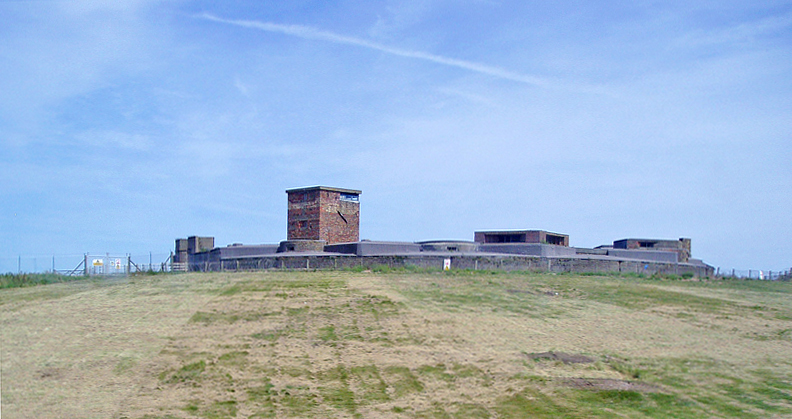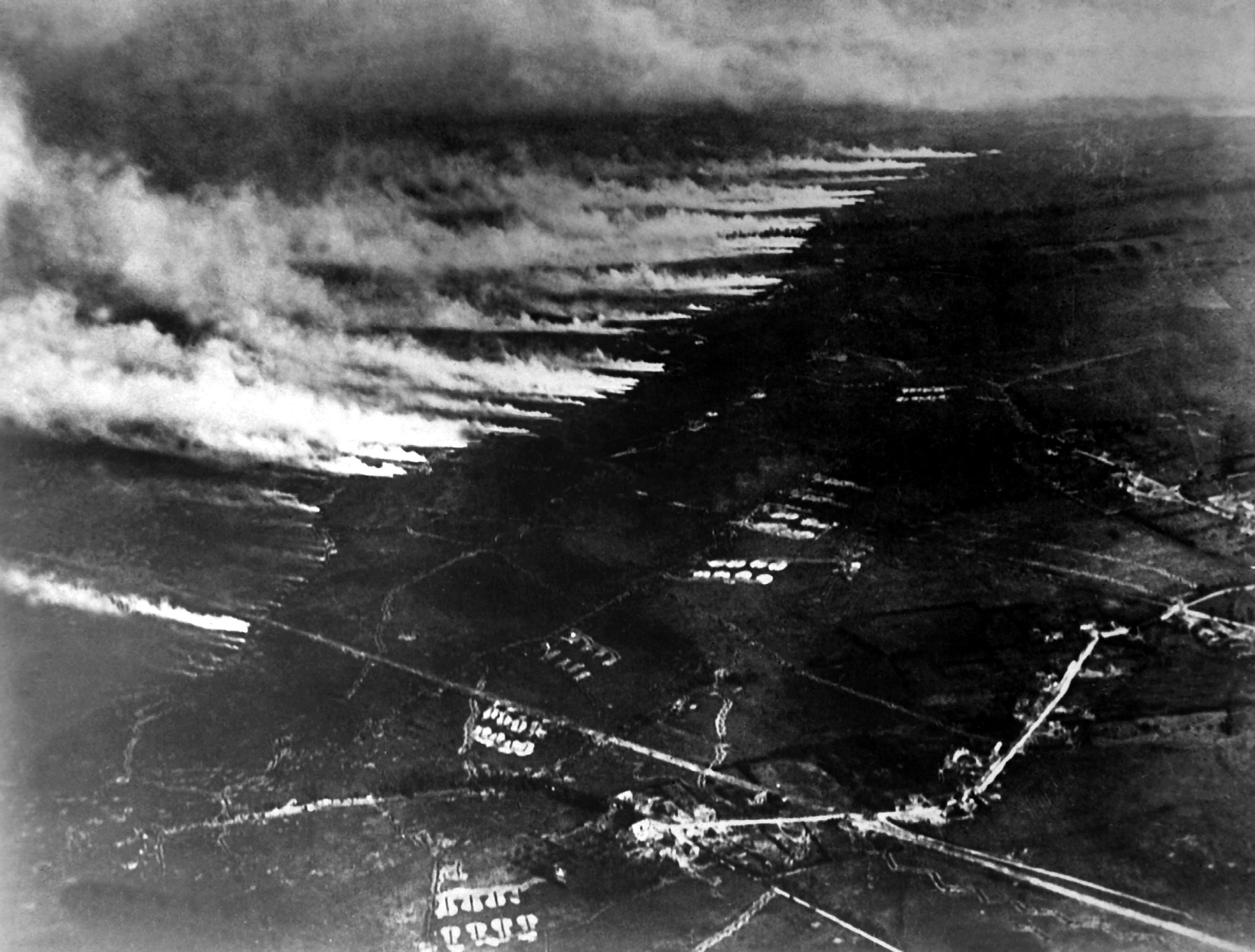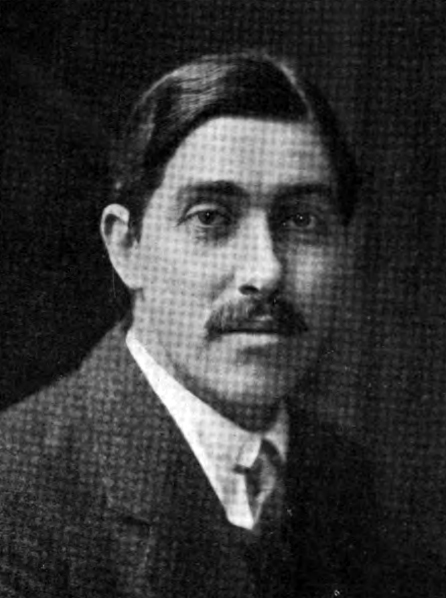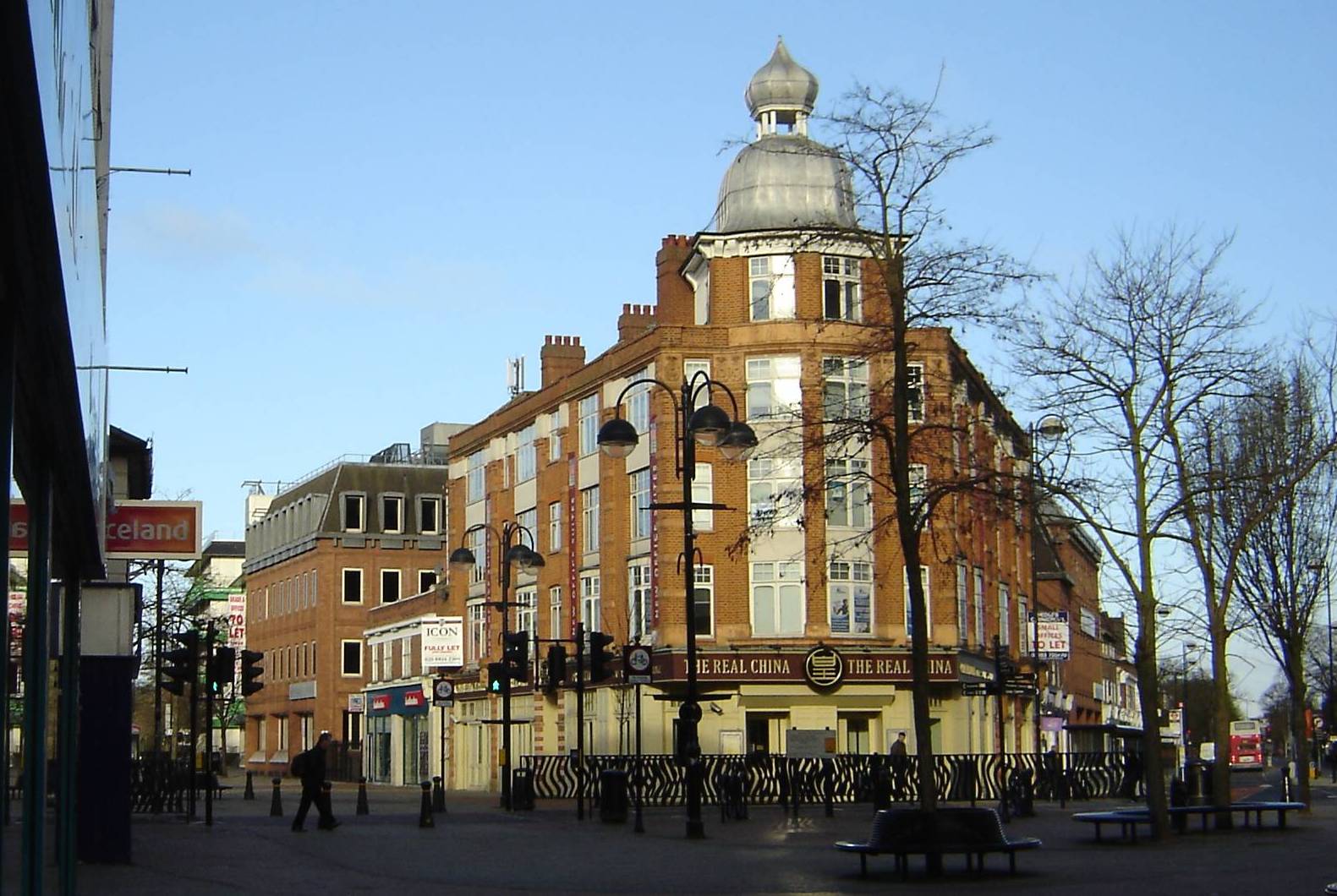|
Claud Lovat Fraser
Claud Lovat Fraser (15 May 1890 London – 18 June 1921, Dymchurch) was an English artist, designer and author. Early life Claud Lovat Fraser was christened Lovat Claud; as a young man he reversed those names for euphony's sake but he was always known as Lovat. Fraser's father (also Claud) was a prominent solicitor, his mother an able amateur artist and musician. Fraser was educated at Windlesham House School and Charterhouse and after leaving school in 1907, aged 17, he commenced legal studies and he entered his father's firm as an Articled Clerk a year later, but he was always more interested in becoming an artist. In 1911 his father released him from his Articles, he left the firm and began to pursue a career in art. After a year at the Westminster School of Art where his tutors included Walter Sickert he began to create a career for himself. He found an influential friend and supporter in the art critic Haldane MacFall and as an early commission executed illustrations for Ma ... [...More Info...] [...Related Items...] OR: [Wikipedia] [Google] [Baidu] |
Dymchurch
Dymchurch is a village and civil parish in the Folkestone and Hythe district of Kent, England. The village is located on the coast five miles (8 km) south-west of Hythe, and on the Romney Marsh. History The history of Dymchurch began with the gradual build-up of the Romney Marsh. New Hall was rebuilt in 1575 after an earlier wooden structure was destroyed in a fire. It was used as a court room for the Romney Marsh area. The head magistrate was known as Leveller of the Marsh Scotts. It was there that the so-called Scot tax was introduced, levied on residents to fund maintenance of the sea wall. Those directly outside the boundaries and thus not eligible for the tax were said to have got away "scot free". Residents with land were required to grow thorn bushes for building of the wall, as thorn twigs were believed impervious to sea water. Failure resulted in an ear being cut off. During the 17th and 18th centuries, smuggling was rife all along the south-east coast of England ... [...More Info...] [...Related Items...] OR: [Wikipedia] [Google] [Baidu] |
Chemical Weapons In World War I
The use of toxic chemicals as weapons dates back thousands of years, but the first large scale use of chemical weapons was during World War I. They were primarily used to demoralize, injure, and kill entrenched defenders, against whom the indiscriminate and generally very slow-moving or static nature of gas clouds would be most effective. The types of weapons employed ranged from disabling chemicals, such as tear gas, to lethal agents like phosgene, chlorine, and mustard gas. This chemical warfare was a major component of the first global war and first total war of the 20th century. The killing capacity of gas was limited, with about 90,000 fatalities from a total of 1.3 million casualties caused by gas attacks. Gas was unlike most other weapons of the period because it was possible to develop countermeasures, such as gas masks. In the later stages of the war, as the use of gas increased, its overall effectiveness diminished. The widespread use of these agents of chemical warfar ... [...More Info...] [...Related Items...] OR: [Wikipedia] [Google] [Baidu] |
The Beggar's Opera
''The Beggar's Opera'' is a ballad opera in three acts written in 1728 by John Gay with music arranged by Johann Christoph Pepusch. It is one of the watershed plays in Augustan drama and is the only example of the once thriving genre of satirical ballad opera to remain popular today. Ballad operas were satiric musical plays that used some of the conventions of opera, but without recitative. The lyrics of the airs in the piece are set to popular broadsheet ballads, opera arias, church hymns and folk tunes of the time. ''The Beggar's Opera'' premiered at the Lisle's Tennis Court, Lincoln's Inn Fields Theatre on 29 January 1728 and ran for 62 consecutive performances, the second-longest run in theatre history up to that time (after 146 performances of Robert Cambert's ''Pomone (opera), Pomone'' in Paris in 1671). The work became Gay's greatest success and has been played ever since; it has been called "the most popular play of the eighteenth century". In 1920, ''The Beggar's Opera ... [...More Info...] [...Related Items...] OR: [Wikipedia] [Google] [Baidu] |
John Gay
John Gay (30 June 1685 – 4 December 1732) was an English poet and dramatist and member of the Scriblerus Club. He is best remembered for ''The Beggar's Opera'' (1728), a ballad opera. The characters, including Captain Macheath and Polly Peachum, became household names.. Early life Gay was born in Barnstaple, England, last of five children of William Gay (died 1695) and Katherine (died 1694), daughter of Jonathan Hanmer, "the leading Nonconformist divine of the town" as founder of the Independent Dissenting congregation in Barnstaple. The Gay family- "fairly comfortable... though far from rich"- lived in "a large house, called the Red Cross, on the corner of Joy Street". The Gay family was "of respectable antiquity" in North Devon, associated with the manor of Goldsworthy at Parkham and with the parish of Frithelstock (where the senior line remained, resident at the priory Cloister Hall with its lands, until 1823) and became "powerful and numerous" in the town, "established a ... [...More Info...] [...Related Items...] OR: [Wikipedia] [Google] [Baidu] |
Stratford Upon Avon
Stratford-upon-Avon (), commonly known as just Stratford, is a market town and civil parish in the Stratford-on-Avon district, in the county of Warwickshire, in the West Midlands region of England. It is situated on the River Avon, north-west of London, south-east of Birmingham and south-west of Warwick. The town is the southernmost point of the Arden area on the edge of the Cotswolds. In the 2021 census Stratford had a population of 30,495; an increase from 27,894 in the 2011 census and 22,338 in the 2001 Census. Stratford was originally inhabited by Britons before Anglo-Saxons and remained a village before the lord of the manor, John of Coutances, set out plans to develop it into a town in 1196. In that same year, Stratford was granted a charter from King Richard I to hold a weekly market in the town, giving it its status as a market town. As a result, Stratford experienced an increase in trade and commerce as well as urban expansion. Stratford is a popular tourist ... [...More Info...] [...Related Items...] OR: [Wikipedia] [Google] [Baidu] |
As You Like It
''As You Like It'' is a pastoral comedy by William Shakespeare believed to have been written in 1599 and first published in the First Folio in 1623. The play's first performance is uncertain, though a performance at Wilton House in 1603 has been suggested as a possibility. ''As You Like It'' follows its heroine Rosalind as she flees persecution in her uncle's court, accompanied by her cousin Celia to find safety and, eventually, love, in the Forest of Arden. In the forest, they encounter a variety of memorable characters, notably the melancholy traveller Jaques, who speaks many of Shakespeare's most famous speeches (such as "All the world's a stage", "too much of a good thing" and "A fool! A fool! I met a fool in the forest"). Jaques provides a sharp contrast to the other characters in the play, always observing and disputing the hardships of life in the country. Historically, critical response has varied, with some critics finding the play a work of great merit and some f ... [...More Info...] [...Related Items...] OR: [Wikipedia] [Google] [Baidu] |
Nigel Playfair
Sir Nigel Ross Playfair (1 July 1874 – 19 August 1934) was an English actor and director, known particularly as actor-manager of the Lyric Theatre, Hammersmith, in the 1920s. After acting as an amateur while practising as a lawyer, he turned professional in 1902 when he was 28. After a time in F. R. Benson's company he made steady professional progress as an actor, but the major change in his career came in 1918, when he became managing director of the Lyric, a run-down theatre on the fringe of central London. He transformed the theatre's fortunes, with a mix of popular musical shows and classic comedies, some in radically innovative productions, which divided opinion at the time but which have subsequently been seen as introducing a modern style of staging. Life Family background Playfair was born in the parish of St George Hanover Square, Westminster, on 1 July 1874, the younger son of the five children of the obstetric physician William Smoult Playfair (1835–1903) ... [...More Info...] [...Related Items...] OR: [Wikipedia] [Google] [Baidu] |
Curwen Press
The Curwen Press was founded by the Reverend John Curwen in 1863 to publish sheet music for the "tonic sol-fa" system. The Press was based in Plaistow, Newham, east London, England, where Curwen was a pastor from 1844. The Curwen Press is best known for its work in the period 1919-1939. The Press's output included books, advertising posters and published ephemera which typically used three interrelated elements: typography, decoration, and publicity which together give the Press a unique and memorable style. The work of the Press provides important evidence that the fine printing of the interwar years was not confined to private presses. The Curwen Press, under the management of Harold Curwen, John's grandson, was at the vanguard of the design revolution that saw expression in British printing in the early 20th century. An underlying ethos of the Curwen Press was that its craftsmanship could and should take both craftsman and consumer on an emotional and aesthetic voyage. Haro ... [...More Info...] [...Related Items...] OR: [Wikipedia] [Google] [Baidu] |
Poetry Bookshop
The Poetry Bookshop operated at 35 Devonshire Street (now Boswell Street) in the Bloomsbury district of central London, from 1913 to 1926. It was the brainchild of Harold Monro, and was supported by his moderate income.Joy Grant, ''Harold Monro and the Poetry Bookshop'' (Berkeley, 1967) The Bookshop not only sold, but also published, poetry by living poets. Readers were encouraged to browse, and several poets actually made their home there, including Wilfred Owen, Wilfrid Wilson Gibson and Robert Frost. The atmosphere was welcoming, and the shop's best-sellers were hand-coloured rhyme sheets for children. During World War I, when Monro was serving in the armed forces, the shop was run almost single-handed by his assistant, Alida Klementaski, whom he later married. Among the works published by the Poetry Bookshop were collections by Charlotte Mew and Richard Aldington and the ''Georgian Poetry'' series as well as Ezra Pound's seminal 1914 anthology '' Des Imagistes''. Penelope ... [...More Info...] [...Related Items...] OR: [Wikipedia] [Google] [Baidu] |
Harold Monro
Harold Edward Monro (14 March 1879 – 16 March 1932) was an English poet born in Brussels, Belgium. As the proprietor of the Poetry Bookshop in London, he helped many poets to bring their work before the public. Life and career Monro was born at 137 chaussée de Charleroi, Saint-Gilles/St Gillis, Brussels, on 14 March 1879, as the youngest of three surviving children of Edward William Monro (1848–1889), civil engineer, and his wife and first cousin, Arabel Sophia (1849–1926), daughter of Peter John Margary, also a civil engineer.Dominic Hibberd: "Monro, Harold Edward (1879–1932)", ''Oxford Dictionary of National Biography'', Oxford University Press, 200Retrieved 14 December 2014/ref> Monro's father was born at Marylebone and died aged 41 when Monro was only nine years old. This loss may have influenced his character as a poet. The Monro family was well established in Bloomsbury. His paternal grandfather, Dr Henry Munro FRCP MD, was a surgeon, born at Gower St, Bloomsbury ... [...More Info...] [...Related Items...] OR: [Wikipedia] [Google] [Baidu] |
Grace Inez Crawford
Grace Inez Crawford, also known as Grace Lovat Fraser (1889–1977) was an American singer, actress, costume designer, translator of plays, and author of several books. Biography She was born in Paris in 1889, daughter of Theron Clark Crawford, an American entrepreneur, and a highly trained amateur pianist. Her father's professional projects (including work with Buffalo Bill Cody's "Wild West Show") caused the family to reside in various European and American cities, but England was considered home. Crawford's circle of acquaintances in London included Ezra Pound, Ford Madox Ford, Violet Hunt, William Butler Yeats, and D. H. Lawrence. Crawford received training in voice, ballet, piano, and music theory, as well as French, German and Italian. She met her future husband, artist Claud Lovat Fraser, during a fitting for a faun costume for Hugo Rumbold's adaptation of '' L'Apres-midi d'un Faune''. After a brief courtship, they were married February 6, 1917. During the next four year ... [...More Info...] [...Related Items...] OR: [Wikipedia] [Google] [Baidu] |
Hounslow
Hounslow () is a large suburban district of West London, west-southwest of Charing Cross. It is the administrative centre of the London Borough of Hounslow, and is identified in the London Plan as one of the 12 metropolitan centres in Greater London. It is bounded by Isleworth to the east, Twickenham to its south, Feltham to its west and Southall to its north. Hounslow includes the districts of Hounslow West, Heston, Cranford and Heathrow. Although most of the district lay within the London Borough of Hounslow, some parts fall within the London Borough of Richmond upon Thames and the London Borough of Hillingdon including Heathrow Airport. Most of Hounslow, including its Town Centre, the area south of the railway station and the localities of Lampton and Spring Grove, falls under the TW3 postcode. The TW4 postcode is made up of Hounslow West and parts of Cranford, whilst the TW5 postcode includes Heston and Cranford. Heathrow Airport and parts of Hatton comprise t ... [...More Info...] [...Related Items...] OR: [Wikipedia] [Google] [Baidu] |
.jpg)





.jpg)

